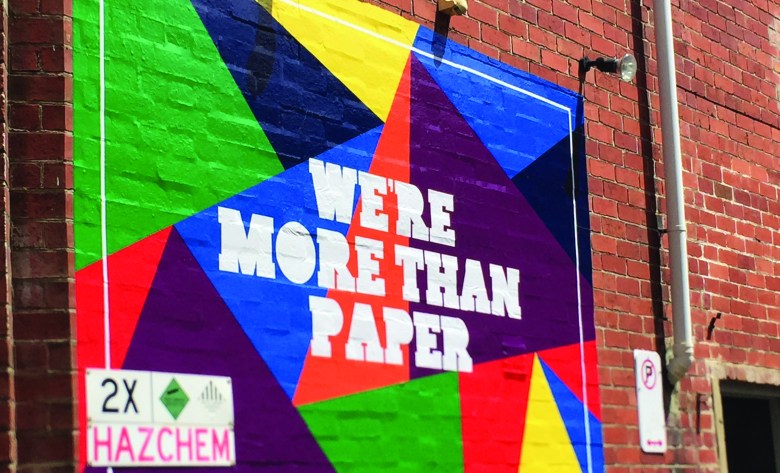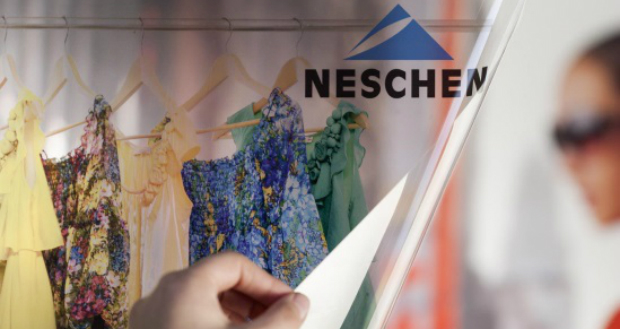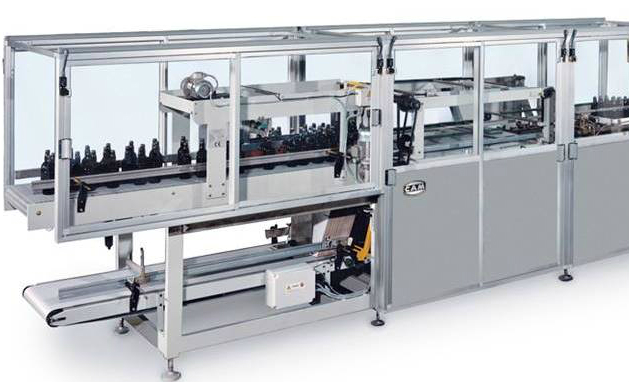
USING the correct film and application technique, print and signage companies can look at using a plethora of applications for any number of creative displays.
Self-adhesive wall films designed for unsealed, textured concrete or brick surfaces open up exciting possibilities for advertising and decorative applications on external buildings and walls.
These specialised films can be moulded into the surface of the wall and take on the appearance of the underlying texture. The result is an image that looks like it has been directly painted onto the wall.
Exterior wall films offer many advantages over painted signs. While painting walls achieves lasting results, the sheer time and cost is more suited to long term, permanent messages. Removing the sign at a later date nearly always proves a time consuming and costly exercise.
Exterior walls make an easy target for vandals and, for that reason, end-users almost always express a reluctance to invest in advertising or decorative applications.
One of the limitations with painted signage is that the removal of graffiti is difficult. The chemicals and cleaning method needed to remove graffiti also destroys any good paint.
Wall films can be laminated with special anti- graffiti laminates that offer conformability as well as protection. These laminates can be cleaned a multitude of times and remain unaffected by graffiti paints or cleaners. Walls damaged by tagging can easily be concealed with attractive graphics and at the same time protected from future vandalism. The wall owner can save considerable money on maintenance costs and maintain a pleasant environment
Creative flexibility
Wall films offer greater creative flexibility than billboards on building sides. Fastening billboards or banners to walls suits cost effective, high turnover promotional campaigns however it requires a framing structure to be fitted to the external building wall.
Advertising messages need to be designed to fit into the defined dimensions of the attached structure and can only be placed where a fixed structure is. This limits the size and creativity of any campaign. Fixing frame work to a building also damages the building surface and in the case of some heritage buildings, is not always possible or desired. Quality wall films can be easily removed from wall surfaces without causing damage or leaving adhesive residue.
Using wall films gives total freedom in placement, size and shape of any printed imagery. This flexibility offers more opportunity for walls to be used as valuable advertising space, increasing revenue opportunities for building owners, advertising agencies and printers alike.
There is a large variance in wall textures and materials. The most important step before installing any wall graphic is to test. This is the only way that you can be sure of compatibility in the field.
Test a sample
To get the most accurate result, always test a sample that is large enough and one that is exactly the same construction as the end graphic. If you are going to print and laminate, then you must test a printed and laminated sample.
Printing and laminating will change the properties of the film. Ink will have an impact on adhesion levels and laminating will have an impact on conformability. If you test an unprinted unlaminated sample, your test results could indicate success yet problems could occur when you install the final graphic.
As with any external application, the environment plays an important part in successful application and performance. The application temperature needs to correspond to the minimum temperature stated on the manufacturer’s technical data sheets otherwise the adhesive will not form a good bond.
Another important factor often overlooked is the moisture content of the substrate. Excessive moisture in concrete and masonry will impact negatively on adhesion. While the surface may appear to be dry or feel dry, internal moisture levels may still be too high.
There is no accurate way of measuring this other than with a device specifically designed for this application. It is a worthwhile investment as moisture levels play an equally influential role with internal wall graphics.
The last step to success is to always follow the recommended preparation and application guides. The most important part of applying a film to a textured surface is to ensure good contact of the adhesive to the substrate by careful methodical heating at the right temperatures and to conform as much of the film as possible into the underlying surface.
With the right film and technique wall graphics have a multitude of applications for advertising, branding, and creating stunning art.
Comment below to have your say on this story.
If you have a news story or tip-off, get in touch at editorial@sprinter.com.au.
Sign up to the Sprinter newsletter


